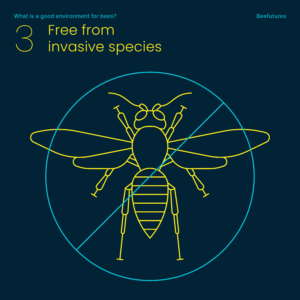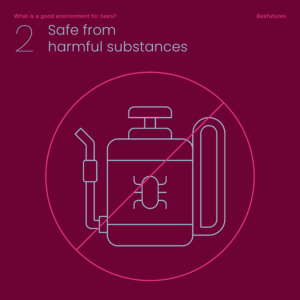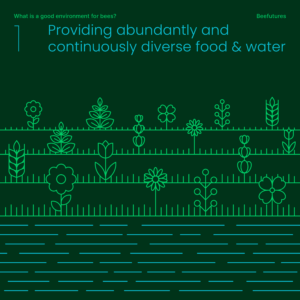In order for bees to thrive, they need an optimal environment which ensures their welll-being and survival. Creating this envornemtn has its challenges, but we can acheive this by carefully considering several factors like these:
ACCESS TO FOOD: Bees require a variety of nectar and pollen sources to meet their nutritional needs throughout the year. Planting a diverse range of flowers that bloom at different times ensures that bees have access to food even during periods of scarcity.
SAFETY: Ensuring that the environment is free from harmful substances is equally important. Pesticides, herbicides, and other chemical substances commonly used in agricultural practices can have detrimental effects on bee health.
DEGRADATION: Preventing the spread of invasive species is another critical aspect of creating a bee-friendly environment. Invasive species, such as the Asian hornet, can pose a significant threat to bee populations by preying on them or competing for resources.
ENVIRONMENT RESILIENCY: Climate change is leading to more frequent and severe weather events, such as heat waves and droughts, which can negatively impact bee populations. Planting drought-resistant vegetation and creating habitats with ample shade and water sources can help bees withstand these challenges.
HUMAN IMPACT: Urbanization and habitat destruction are major threats to bee populations worldwide. Protecting and restoring natural habitats, creating green spaces in urban areas, and reducing pesticide use are all ways in which individuals and organizations can positively influence bee populations.





Though few environments meet all the criteria for thriving bee populations, especially in agricultural and urban areas, organizations can step in to improve bee habitats. Creating bee-friendly environments means tackling multiple factors at once. By closely monitoring and intervening in areas like food availability, pesticide use, invasive species, climate resilience, and human impacts, organizations can make big strides in supporting bee populations. One smart move is deploying honey bee hives equipped with sensors and AI cameras from Beefutures. Those tools can give you insights into the 5 key variables aforementioned, helping organizations understand the challenges bees face.
Armed with this knowledge, organizations can make informed decisions to boost bee habitats. They can identify where more flowers are needed, cut back on harmful pesticides, manage invasive species, and fortify habitats against climate change.
By actively monitoring and managing bee-friendly environments, organizations can truly make a difference in bee health. This not only helps bees but also benefits the broader ecosystem and agricultural systems relying on their pollination services.
This article is written by Beefutures, to further our joint mission at enhancing bee health and promoting a more pollinator-friendly environment in Oslo
Check out Beefutures
